The following pages show photos and a short description of the wildflowers we grow or have grown in the past. They’re arranged alphabetically by Genus — often by the traditional Genus rather than the updated ones that don’t match my reference materials.
DEFINITION OF TERMS:
- KEYSTONE means they are listed by National Wildlife Federation as core plants for a wildlife garden in my ecoregion (Ecoregion 8).
- NOT QUITE NATIVE means they are slightly out of range but adjacent to NYS as determined by GoBotany and NY Flora Atlas.
- Otherwise the plant is a NY-native or native to the area noted.
DEFINITION OF TERMS:
- KEYSTONE means they are listed by National Wildlife Federation as core plants for a wildlife garden in my ecoregion (Ecoregion 8).
- NOT QUITE NATIVE means they are slightly out of range but adjacent to NYS as determined by GoBotany and NY Flora Atlas.
- Otherwise the plant is a NY-native or native to the area noted.
SOUTHEAST NATIVE: Bottlebrush buckeye (Aesculus parviflora)
As Cullina says in Native Trees, Shrubs, & Vines, “Bottlebrush buckeye is a sublime shrub if you can give it some breathing space and time to develop.”
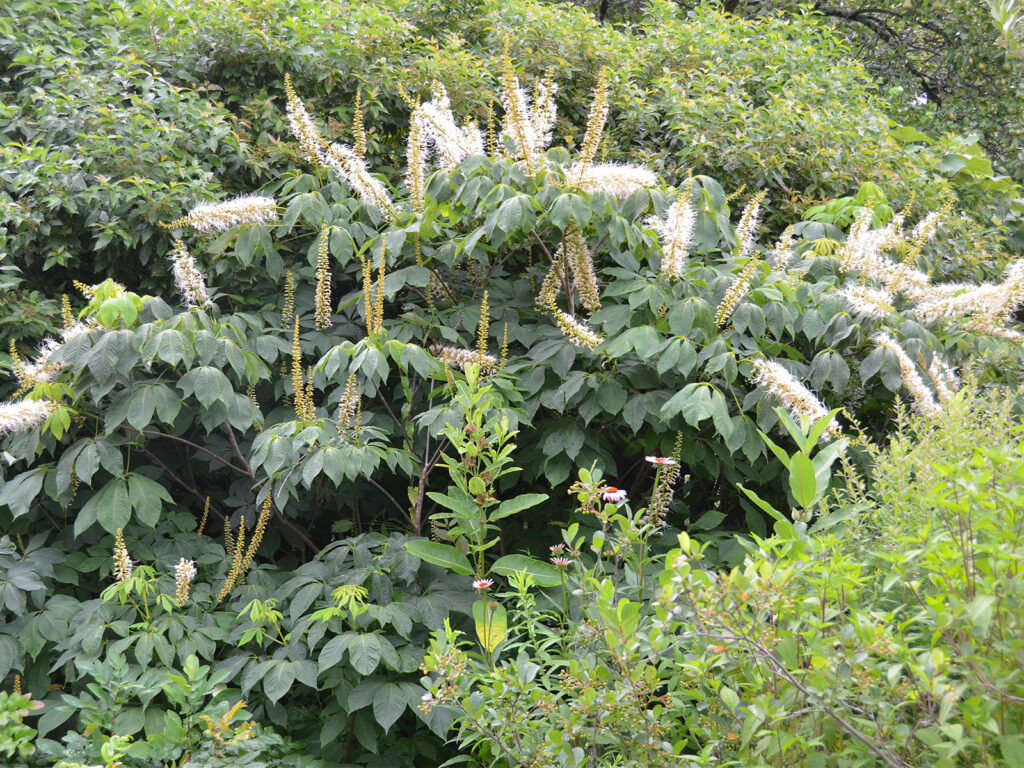
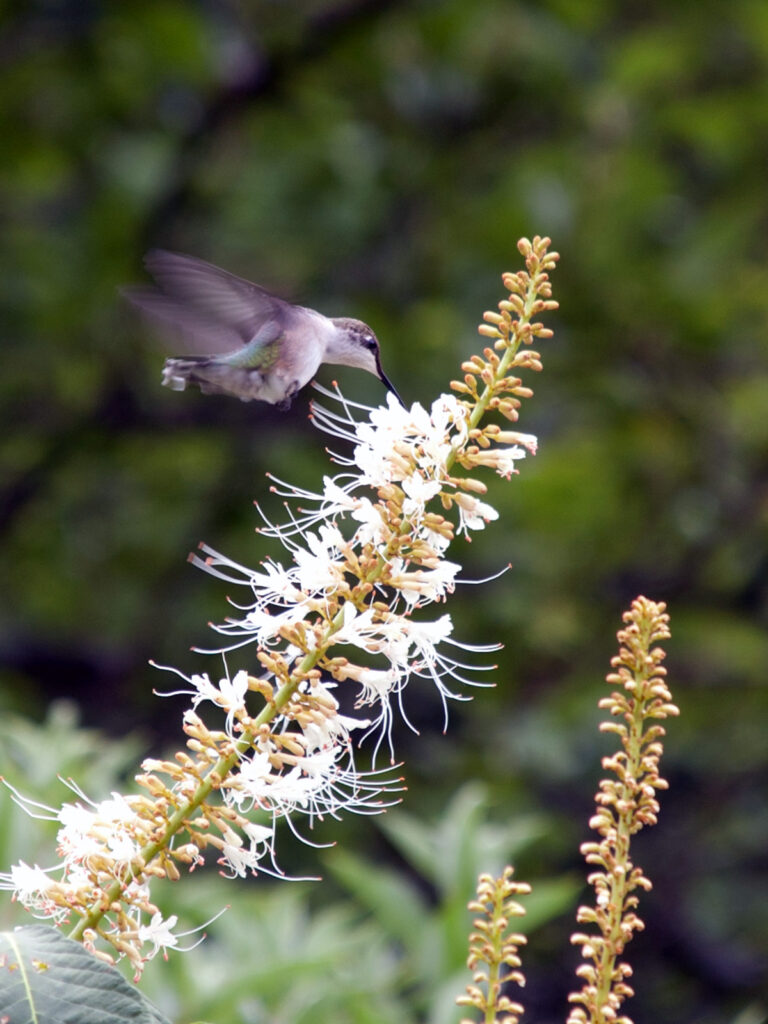
The flowers are an attractive nectar source, as this hummingbird points out.
I’ve also seen butterflies nectaring there, and I assume bees, too, though I’m not in the roadside hedgerow often enough to notice.
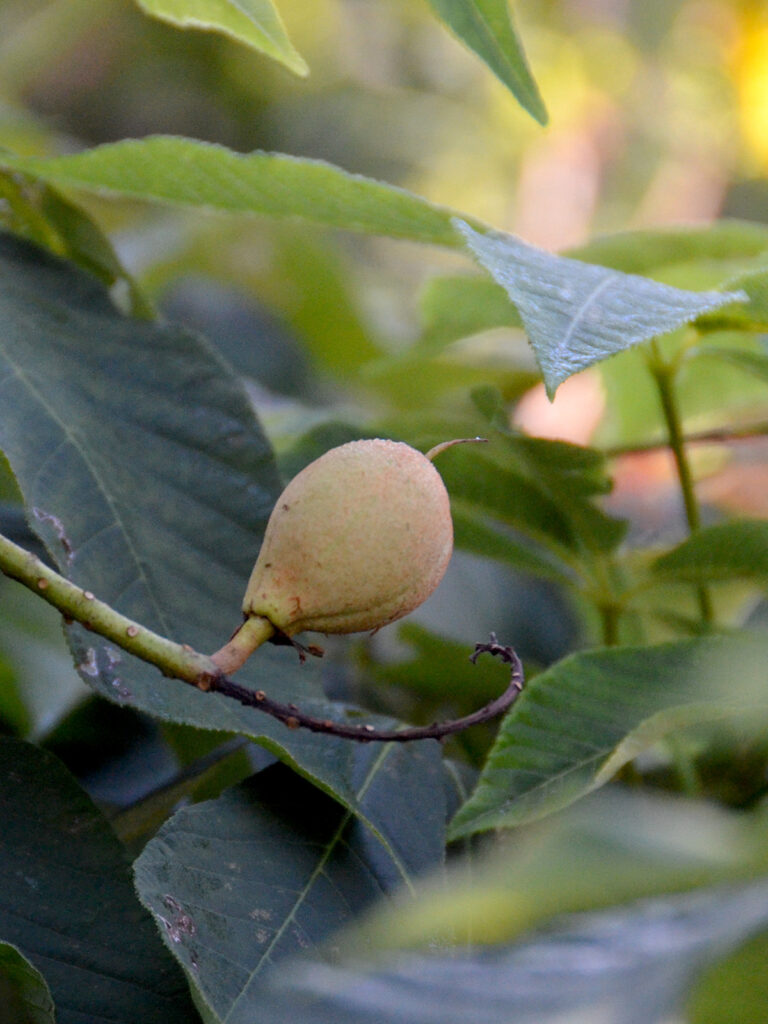
Here are the “nuts” — a far cry from the big buckeye nuts I used to collect from a buckeye tree when I was a kid. They’re comparatively quite small.
Wildlife: Flowers for hummingbirds and butterflies
- Learn more:
- Wildflower Center: Bottlebrush buckeye
MIDWEST NATIVE: Leadplant (Amorpha canescens)
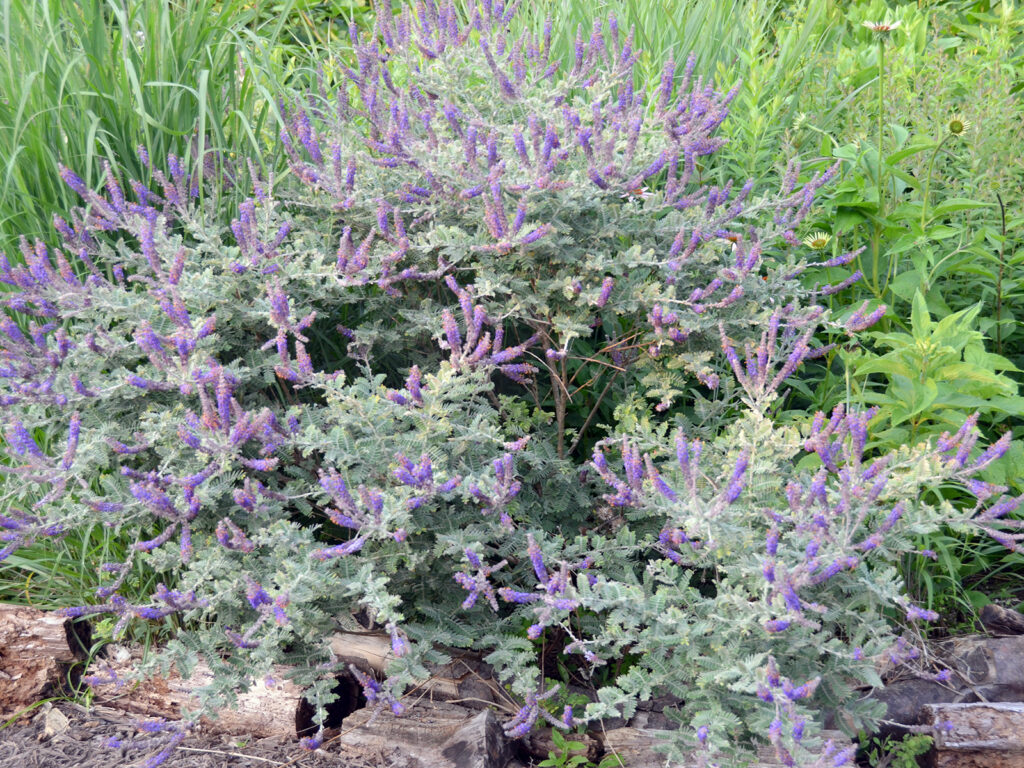
This plant is a woody legume. It’s actually a prairie plant, not native to the Northeast. I purchased it at my first native plant conference in Ohio, when I didn’t yet fully understand that a “native” plant wasn’t just a native plant, but native to a particular place. In its native habitat, it’s one of few woody plants of the prairie, and as a legume, it supplies nitrogen to the prairie.
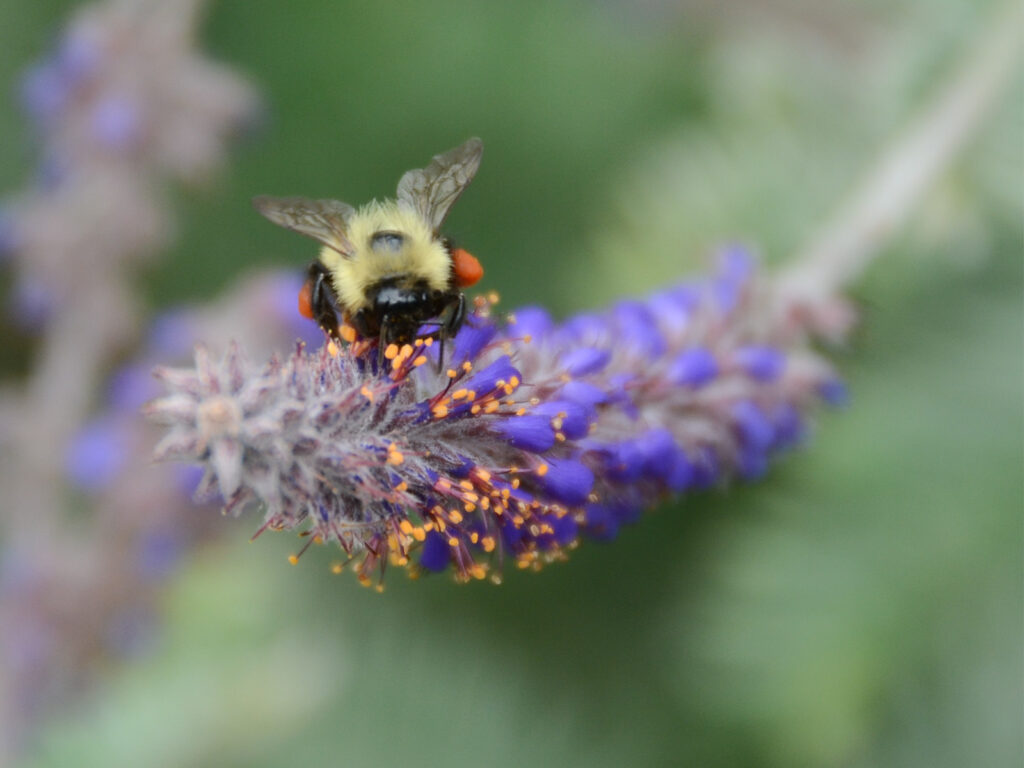
It’s not likely to be a problem in my suburban yard, so I’ll keep it as one of my few non-native non-invasive plants.
The flowers are purple with orange stamens. I love seeing bumble bees with orange patches of pollen after visiting these plants, which is a bumble bee favorite!
Wildlife: Nectar for insects, fruit for mammals
** SPECIAL VALUE TO NATIVE BEES **
- Learn more:
- Wildflower Center: Leadplant
Red chokeberry (Aronia arbutifolia ‘Brilliantissima’)
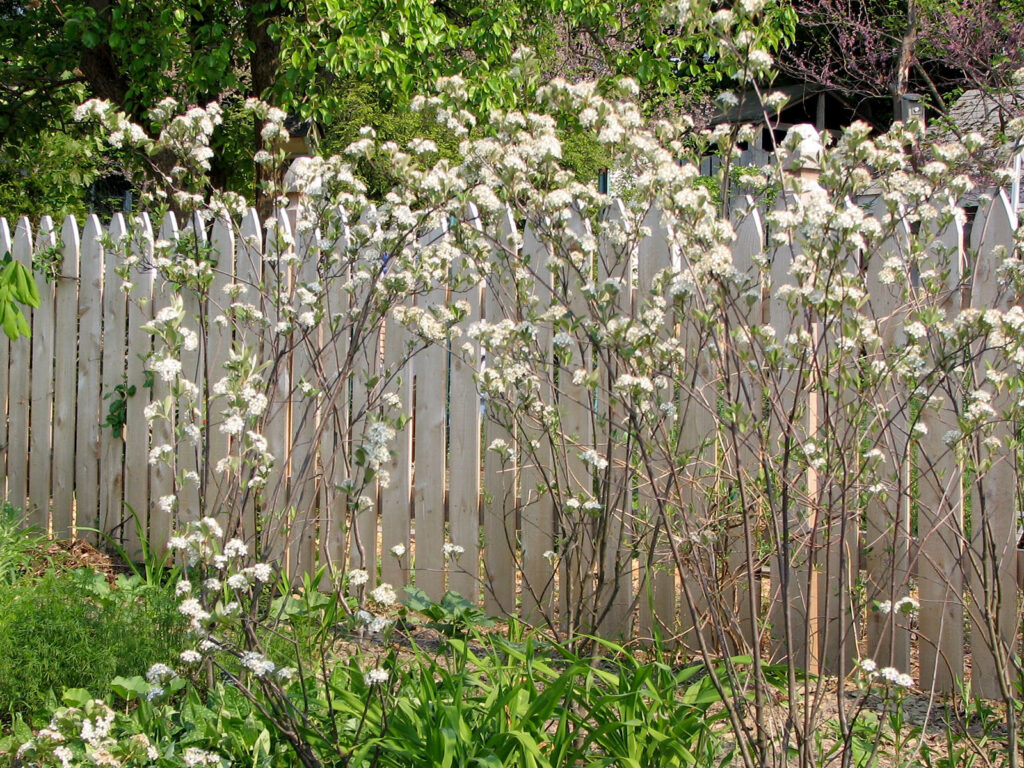
Even though I try to buy the species in general, this particular one is a cultivar, which is the only red chokeberry I could find years ago.
This shows some of the little group of about seven red chokeberries I’ve planted in the hedge row. We try to have largish groups whenever we have space.
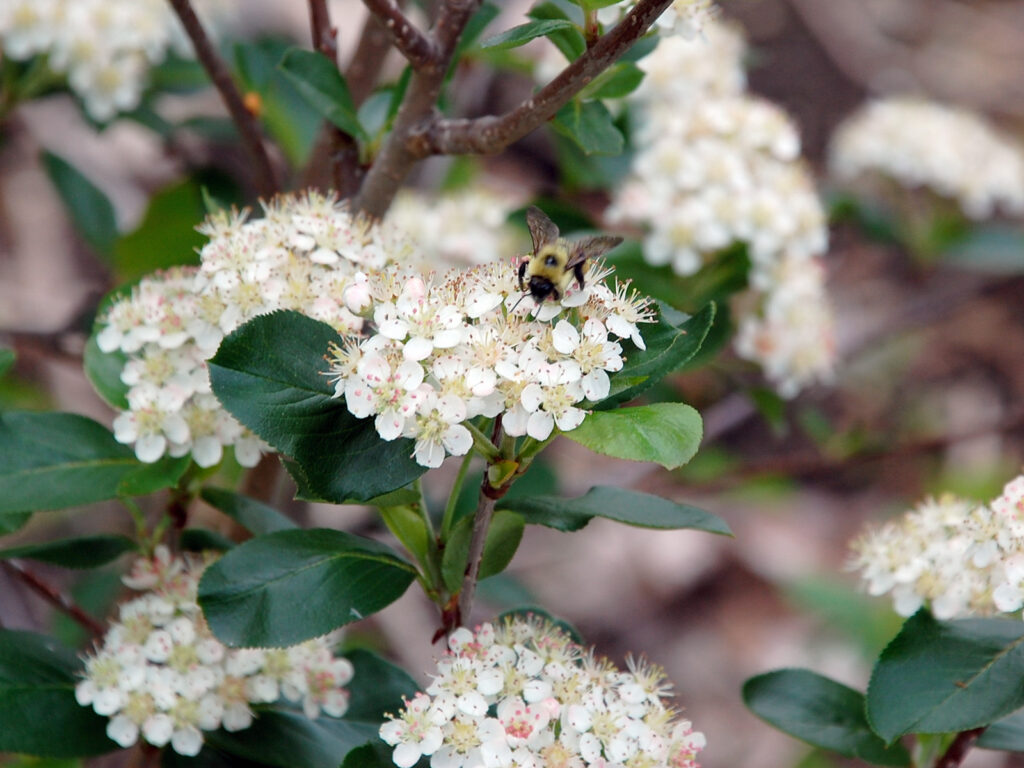
In the spring, it has beautiful white flowers, which are a source of nectar.
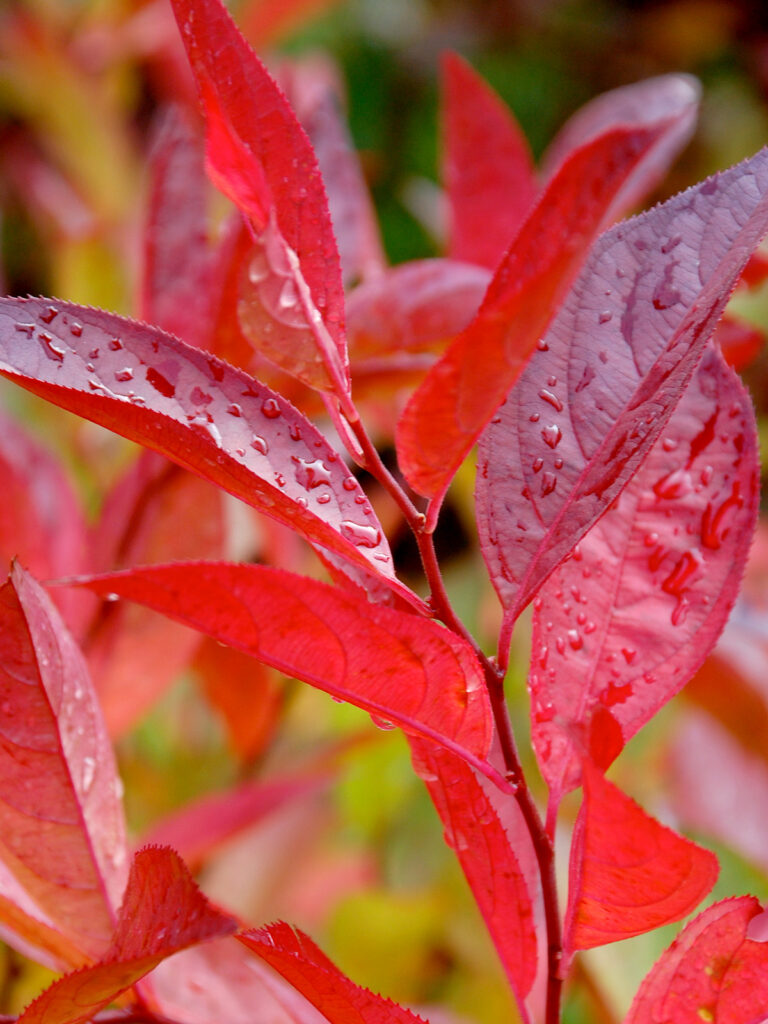
The foliage is gorgeous in the fall. Why would people plant the invasive burning bush when plants such as this one are so spectacular?
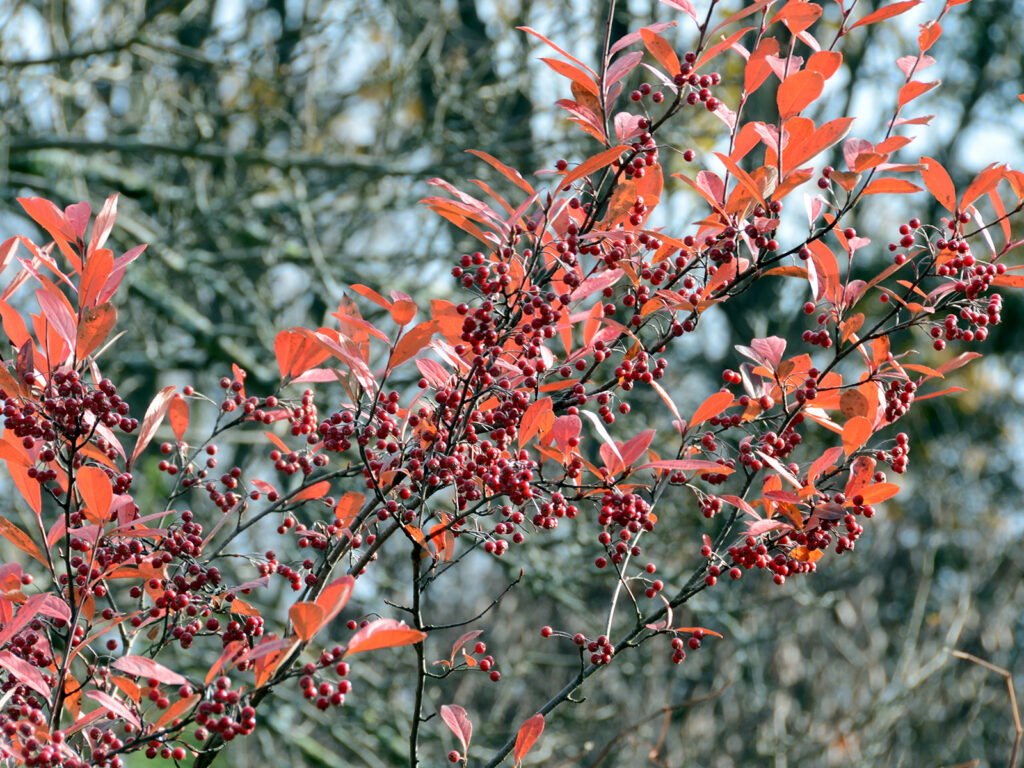
Red chokeberries have lots of berries. They’re outside the fence along the road, so we don’t always see who is eating them, but I’ve noticed robins and some other birds eating them in the spring. I’ve heard they’re an “emergency” food for birds. In other words, they eat them if they can’t find anything else.
Wildlife: Intermediate food source for birds
- Learn more:
- Wildflower Center: Red chokeberry (aka Photinia pyrifolia)
- Native Plant Trust: Red chokeberry
Black chokeberry (Aronia melanocarpa ‘Autumn Magic’ and ‘Viking’)
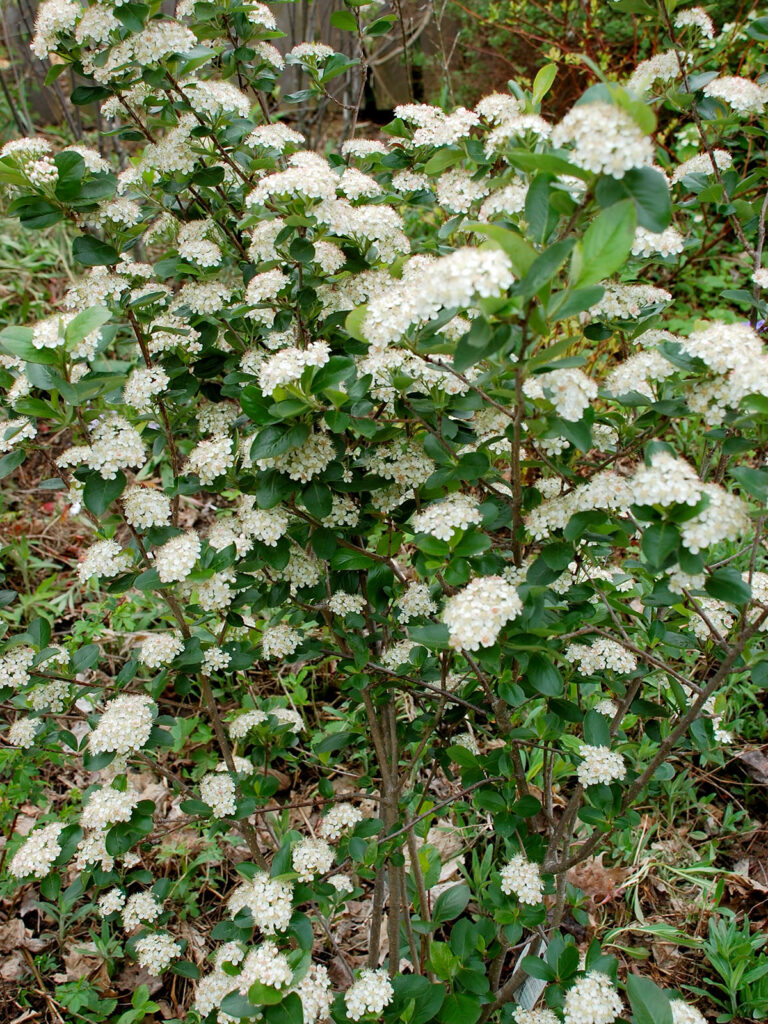
Black chokeberries are similar to red chokeberries, though I think they’re a bit showier — especially the flowers, which stand out nicely against the darker foliage.
These are cultivars since they were the only black chokeberries I could find at the time. We lost track of which plant is which, but I don’t see much difference between the two plants we have.
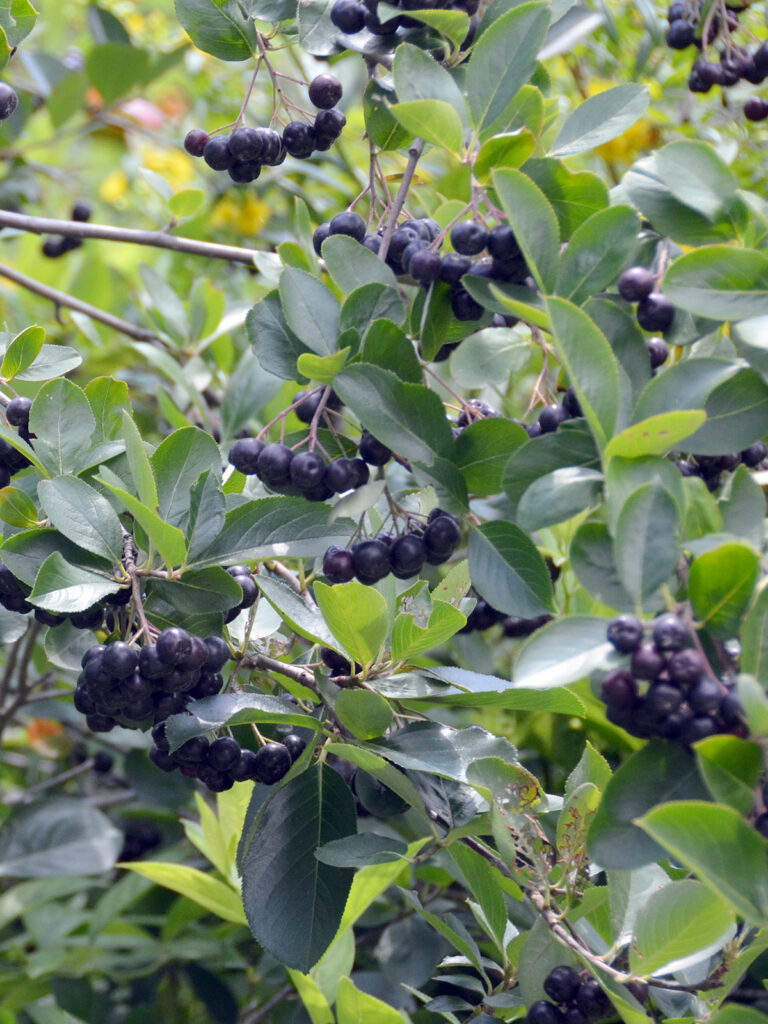
I planted these shrubs pretty close to the street. They seem to survive the road salt pretty well, but some winters their branches get crunched by the piles of snow that accumulate along the road. In retrospect, I should have planted them a little farther from the road.
They’re very heavy producers (at least these cultivars), and the plants almost bend to the ground under the weight of the berries. (I wouldn’t consider this to be an advantage, though.)
I don’t know if birds prefer them to red chokeberries, but I know they’re marketed as being edible for people (at least the cultivars I found). I tried one, and I wouldn’t recommend it raw, but maybe when made into jelly they’d be good. I understand why birds consider them to be “emergency” food, though.
Wildlife: Intermediate food source for birds
- Learn more:
- Wildflower Center: Black chokeberry
- Native Plant Trust: Black chokeberry
